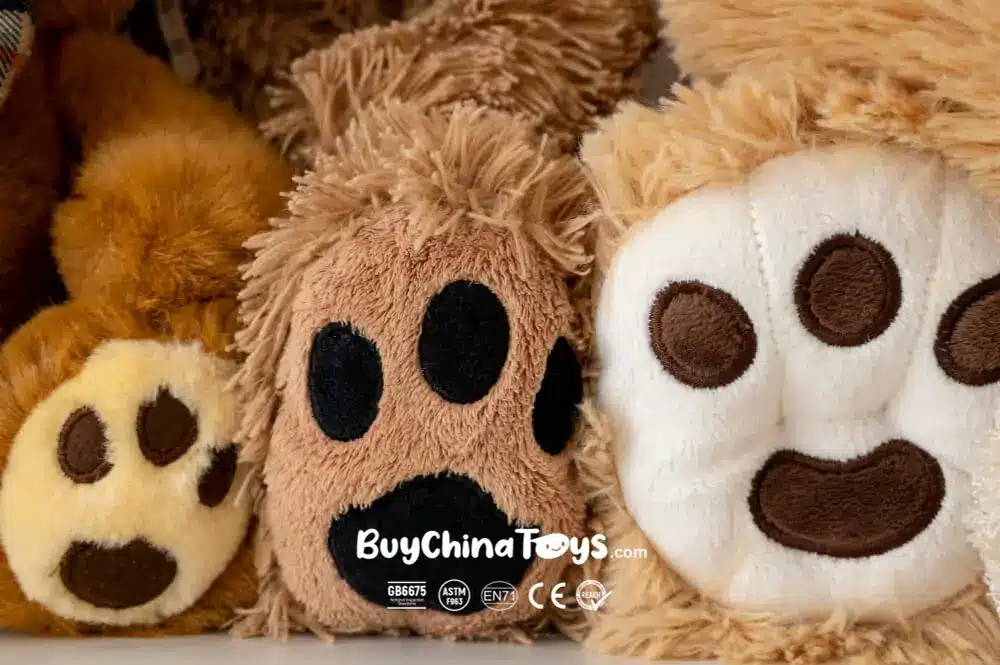Every soft and adorable doll displayed in various shop windows must undergo a long process involving planning, design, and marketing. Toy companies have a complex but highly organized production system. A plush toy company is engaged in producing and distributing soft cloth toys filled with soft materials such as dacron or fiberfill. The products produced are character dolls, animals, or other shapes designed for children and adults.
Contents
Plush Toy Production Process
There are essential and structured stages so that the dolls produced are high-quality, safe, and meet international standards. The following are the general stages of a plush toy company’s production process.
The first stage is to create a design and concept. The company’s creative team will design the shape of the doll based on the client’s ideas, market trends, or the results of popular character research. This design can be a manual sketch or a digital image. The production team will conduct a curation to provide revisions and approve the design.
It should be noted that each design will go through revisions until it produces a realistic visual and is ready to be used as a physical pattern. This design includes details of size, material, color, and additional accessories.
The next stage is making patterns and prototypes. Once the design is approved, the production team will create a pattern from the fabric according to the shape of the doll. These pattern pieces will be sewn to form a prototype or initial sample. This prototype is significant because it will serve as a reference in mass production.
If the prototype is suitable, production will proceed to the next stage, namely selecting materials and filling. Plush toy companies pay close attention to the quality of raw materials. Fabrics such as minky, velboa, and fleece are often chosen because they are soft, durable, and safe for children.
Use filling materials such as hypoallergenic fiberfill on the inside so that the doll is soft and comfortable to hug. At this stage, the fabric is also cut in bulk according to the pattern to continue sewing and filling the material into the doll. At the finishing stage, it includes adding eyes, noses, embroidered names, or other additional accessories.
All these details must be sewn tightly so they do not come off easily. After that, the doll will go through a quality control process. Dolls that are not inspected will be repaired or withdrawn from the distribution process.
Tips for Selecting Raw Materials
The quality of plush toys is highly dependent on the raw materials used. Therefore, a plush toy company must be selective when choosing fabric and filling materials suppliers. Here are some key considerations when selecting a supplier. The first is the existence of safety certification and quality standards. The company will ensure that the supplier has certifications such as OEKO-TEX or CPSIA, guaranteeing that the material is free from hazardous substances.
This is important so that the doll is safe for babies and children. The next tip is consistency of supply. The company also considers the supplier’s ability to provide materials consistently in large quantities, especially when demand is high. Sound quality is essential, but the price of the material must also be appropriate, not to burden production costs.
Plush toy companies usually establish long-term partnerships with suppliers who can provide the best prices without sacrificing quality. Competitive prices are an essential consideration. Delivery speed is an important factor to consider. Time is a crucial factor in the toy industry. Suppliers must be able to send materials on time so as not to hinder the production process.
Marketing Strategies That Need to Be Done by Plush Toy Company
After the product is finished, the next challenge is how to market it so that it can be known and in demand by the wider community. Successful plush toy companies usually implement marketing strategies through E-Commerce.
Utilizing the marketplace is the primary channel for selling plush toys directly to consumers. The company also has its website as a sales and branding center. Plush toy companies collaborate with toy stores, bookstores, or supermarkets with special toy shelves to reach a broader market. Large distributors are also essential partners for selling products offline.
Implementing digital campaign strategies and social media with various platforms effectively promotes plush toy products. Content such as unboxing videos, children’s testimonials, and making dolls can attract consumers’ attention and build trust in the brand. Some companies use plush toys as merchandise or mascots. Plush toy companies usually offer doll production services according to a particular brand logo or character as a promotional medium.
Innovations and Trends Implemented by Plush Toy Company
Companies must constantly innovate to stay relevant to the market. Trends in plush toys include educational toys in the form of dolls in the shape of letters, numbers, or animals that are useful for helping children learn.
Dolls embody children’s creative drawings; this innovation aims to change children’s drawings into real dolls. The next innovation is aromatherapy dolls equipped with calming aromas. Plush Toys for therapy play a role in handling trauma in children or elderly patients. Innovations like this maintain the existence of plush toy companies in the competitive toy world.
That’s a Wrap
As a plush toy company with over 20 years of experience, Buy China Toys has become a trusted partner for international brands looking for quality, safety, and production flexibility. With certifications such as ASTM-F963 and EN71, we ensure that every toy meets global standards.
Their OEM and ODM services allow customers to design dolls according to market needs. From ideas to final products, Buy China Toys is a complete solution for the toy business. For those who want to build a world-class plush toy brand, Buy China Toys is the best choice.

